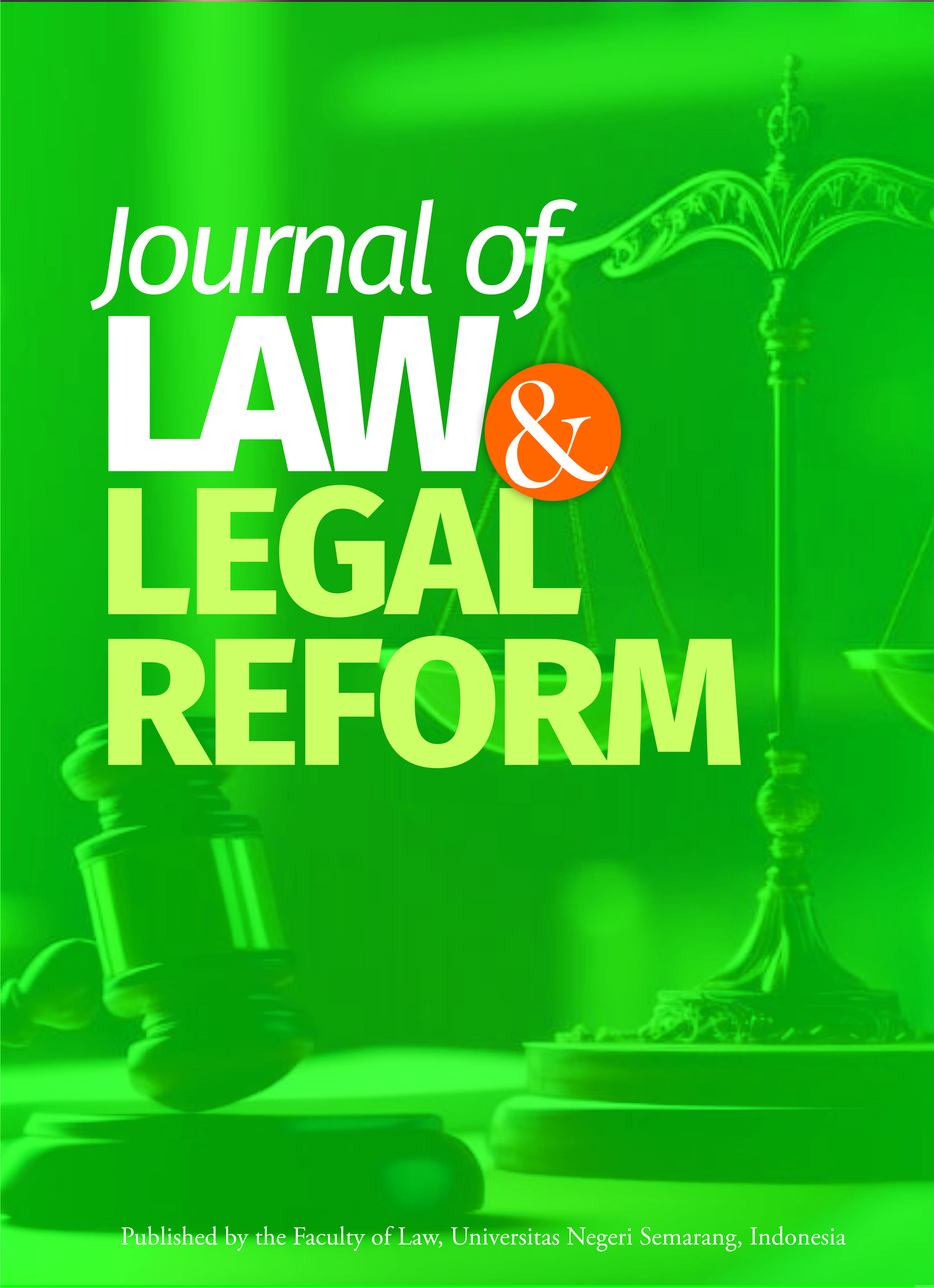The Study on Additional Criminal Imposition Through Counseling Compliance in Domestic Violence Crime
Main Article Content
Abstract
The Domestic Violence Law stipulates an alternative for judges to impose additional penalties in the form of referrals for counseling aiming at providing protection to victims, either as preventive measures or preventive ones. There are three important principles that should frame the assistance provided to the victims by the law enforcers, health workers, social workers, companion volunteers, and spiritual counselors namely: (1) protection to the victims, (2) Sensitivity to the interests of the household, (3) leads to household unity and harmony. This research is designed as a normative research based on documentary research, while the analysis of the collected data is carried out and presented in a qualitative-descriptive manner. This study concludes three important things. First, additional punishment in the form of orders for perpetrators of domestic violence crimes to attend counseling so that the perpetrators can be aware of their actions and willing to change not to commit acts of violence again. Second, the implementation of counselling the perpetrators of domestic violence should take into consideration judicial and sociological requirements when providing counselling as an additional penalty in the form of orders. Third, study finds that attending counseling benefits the family in maintaining the unity of the family and that the children can be raised in a more conducive atmosphere. The weakness of the approach is that the process is time consuming and requires the deployment of more resources.
Article Details
All writings published in this journal are personal views of the authors and do not represent the views of this journal and the author's affiliated institutions. Author(s) retain copyrights under a Creative Commons Attribution-NonCommercial-ShareAlike 4.0 International (CC BY-NC-SA 4.0).
References
Garner, B. A. (ed). (1999). Black’s Law Dictionary 8th Editions. Thomson & West.
Garner, B. A. (ed). (2014). Black’s Law Dictionary 10th Editions. West Group.
Katjasungkana, N., & Damanik, A. (2004). Kejahatan yang Tak Dihukum: Studi Kasus Kekerasan Domestik. Jakarta: LBH Apik Jakarta.
Luhulima, A. (2000). Pemahaman Bentuk-Bentuk Kekerasan terhadap Perempuan dan Alternatif Pemecahannya.
Jakarta: Kelompok Kerja “Convention Watch” Pusat Kajian Wanita dan Jender Universitas Indonesia.
Nurcahyo, L. I., & Ramadhan, C. R. (2016). Kekerasan Terhadap Perempuan Dalam Peradilan Pidana: Analisis Konsistensi Putusan. Jakarta: AIPJ, MaPPI FHUI, LBH APIK Jakarta.
Reinhardt, G., & Cannon, A. (eds). “Australian Magistrates, Therapeutic Jurisprudence and Social Change – Transforming Legal Process in Court and Beyond,” A Collection of Referred Papers from the 3rd International Conference on Therapeutic Jurisprudence, In iSharyn Roach Anleu and athy Mack, Perth, Western Australia 7-9 June 2006).
Soeroso, M. H. (2010). Kekerasan Dalam Rumah Tangga Dalam Perspektif Yuridis-Viktimologis. Jakarta: Sinar Grafika.
Suhasril, S. (2016). Perlindungan Hukum Terhadap Anak dan Perempuan. Jakarta: Rajawali Press.
Tim Penulis Agupena. (2016). PAPPATAMMA: Perlindungan Perempuan dan Anak Berbasis Kearifan Lokal di Indonesia. Yogyakarta: Deepublish.
Wattie, A. M. (2002). Kekerasan terhadap Perempuan di Ruang Publik; Fakta, Penanganan dan Rekomendasi. Yogyakarta: PPK dan Ford Foundation.
Winick, B. J., & Wexler, D. B. (eds). (2003). Judging in a Therapeutic Key: Therapeutic Jurisprudence and the Courts. Durham NC, Carolina: Academic Press.
Legal Document
Putusan Pengadilan Nomor 41/Pid.Sus/2015/PN.Rno - (BHT).( tanggal 20-01-2016).
Undang-undang Nomor 23 Tahun 2004 Tentang Penghapusan Kekerasan Dalam Rumah Tangga.
